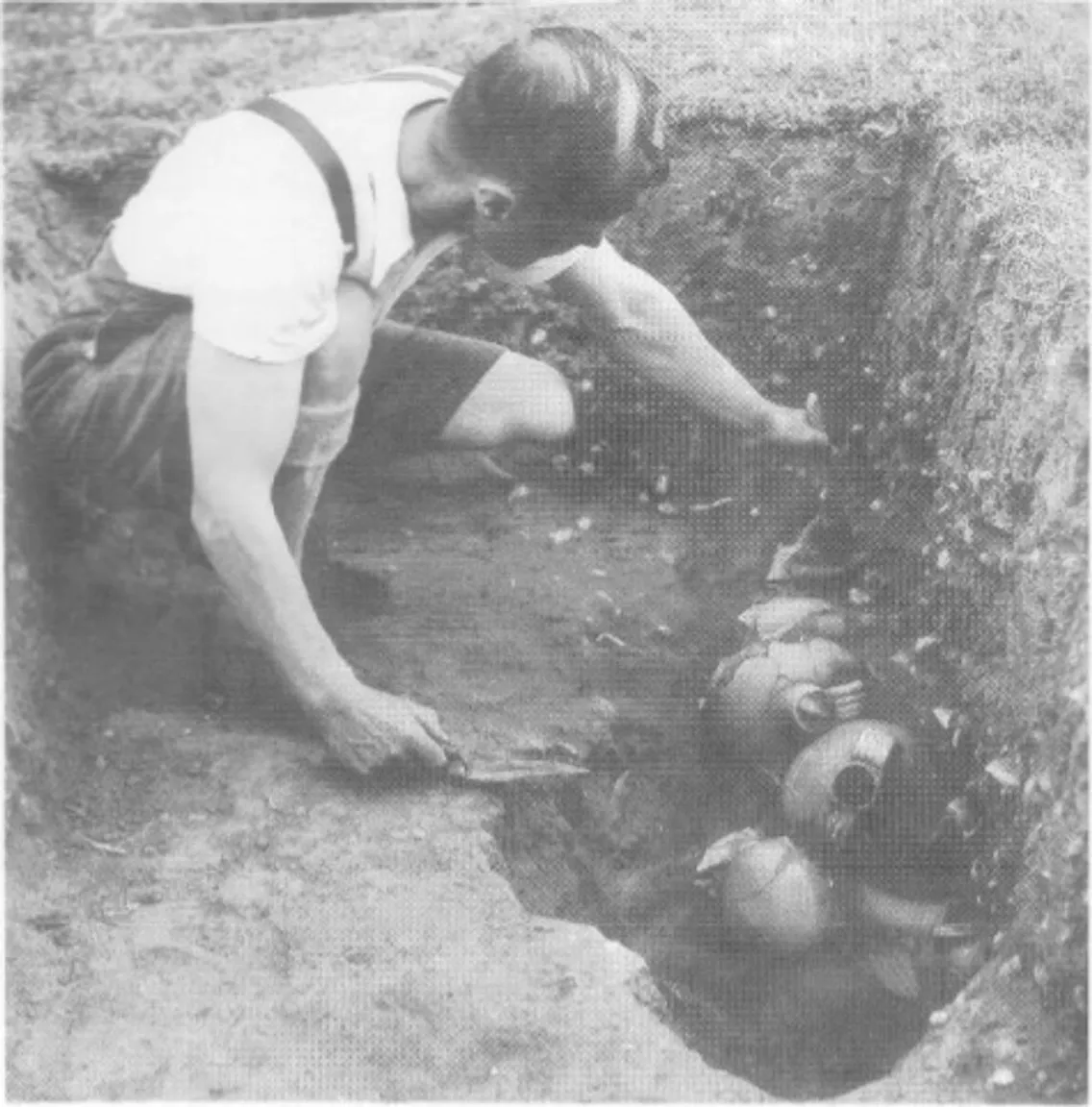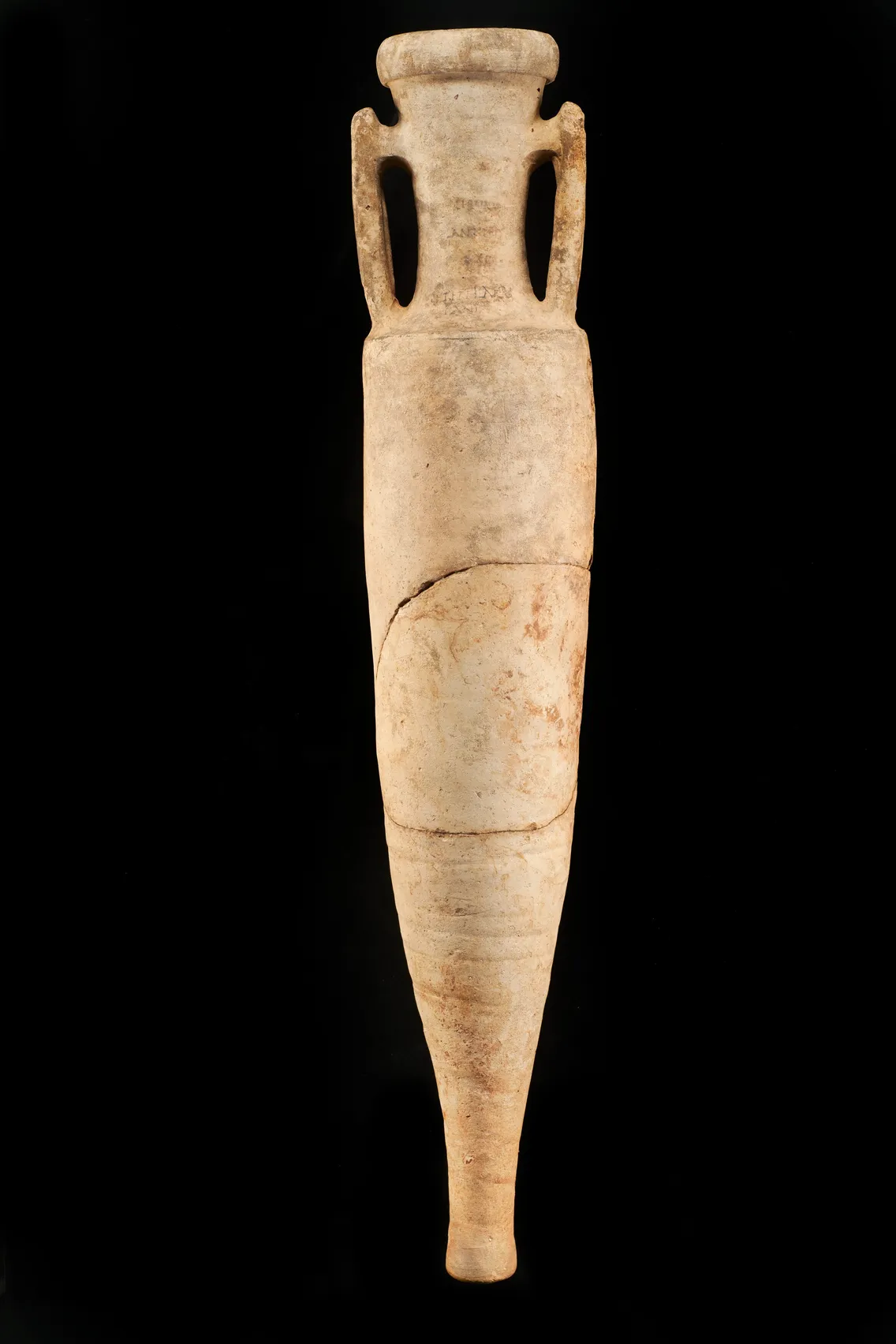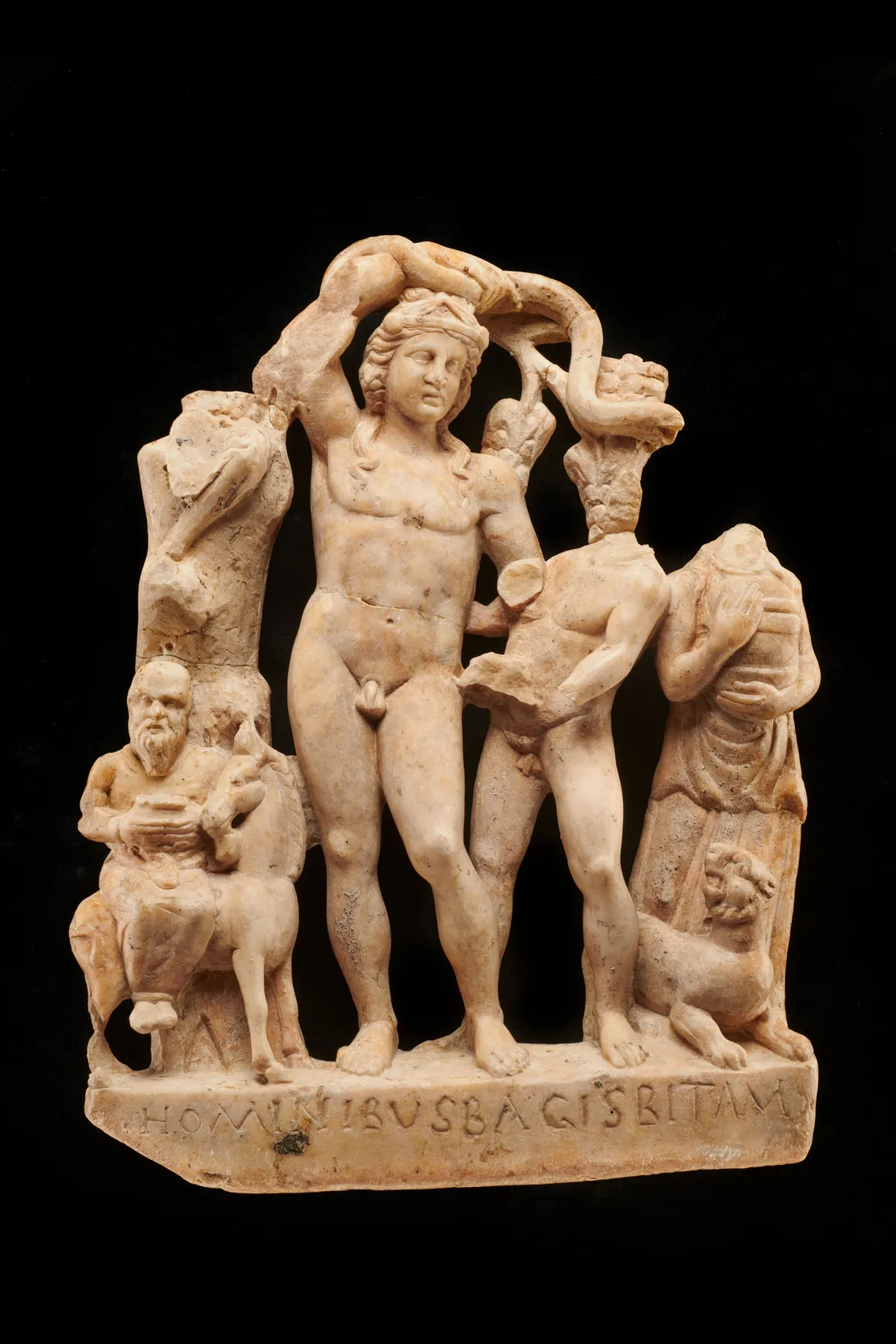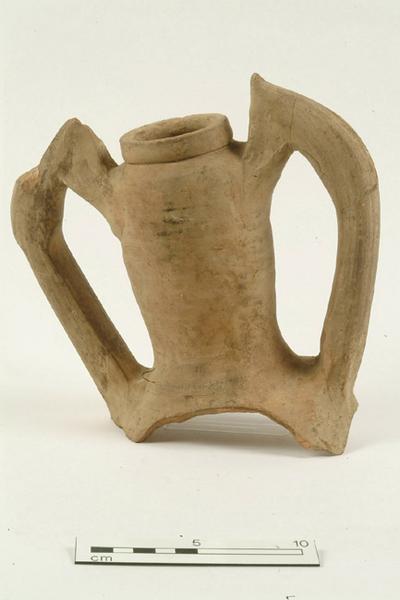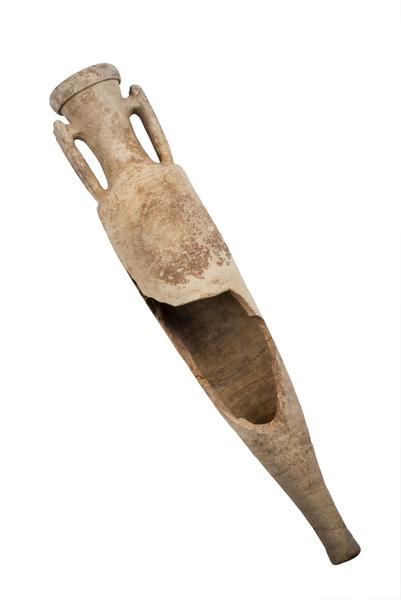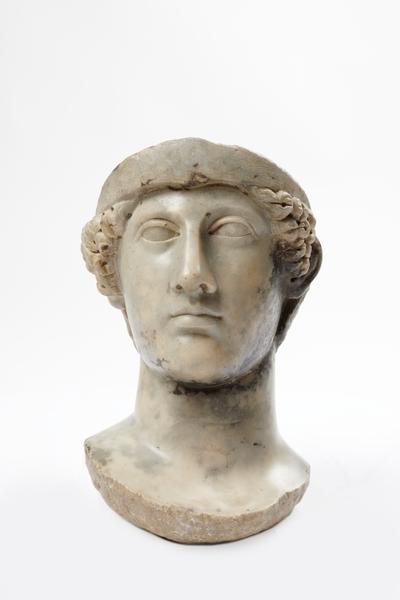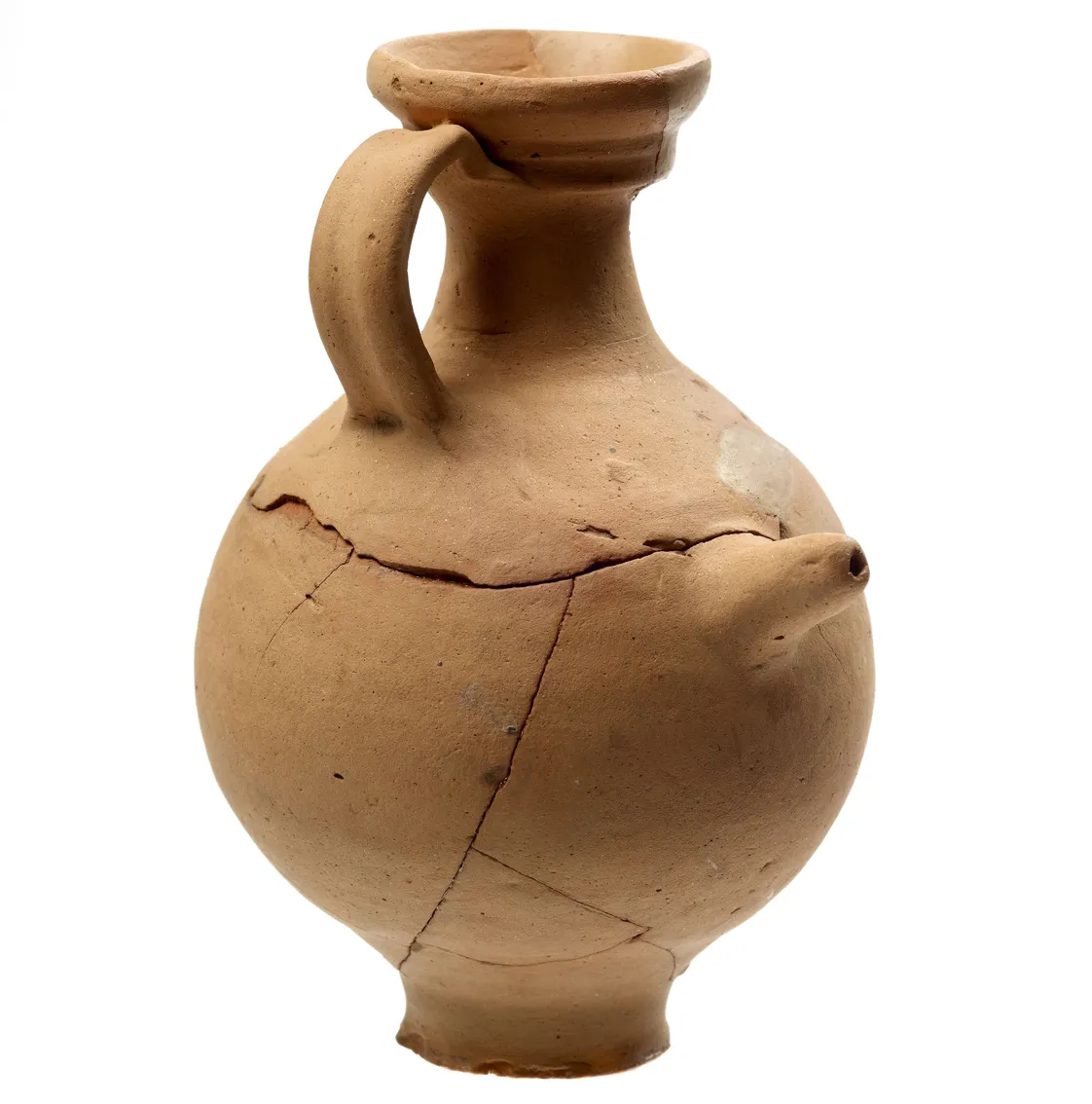The first British wine was made in north London
We can thank the Romans for bringing wine-drinking culture to Britain. And Brockley Hill, on the border of Barnet and Harrow in north London can lay claim to the first British-made wine.
Brockley Hill, north London
1st century CE
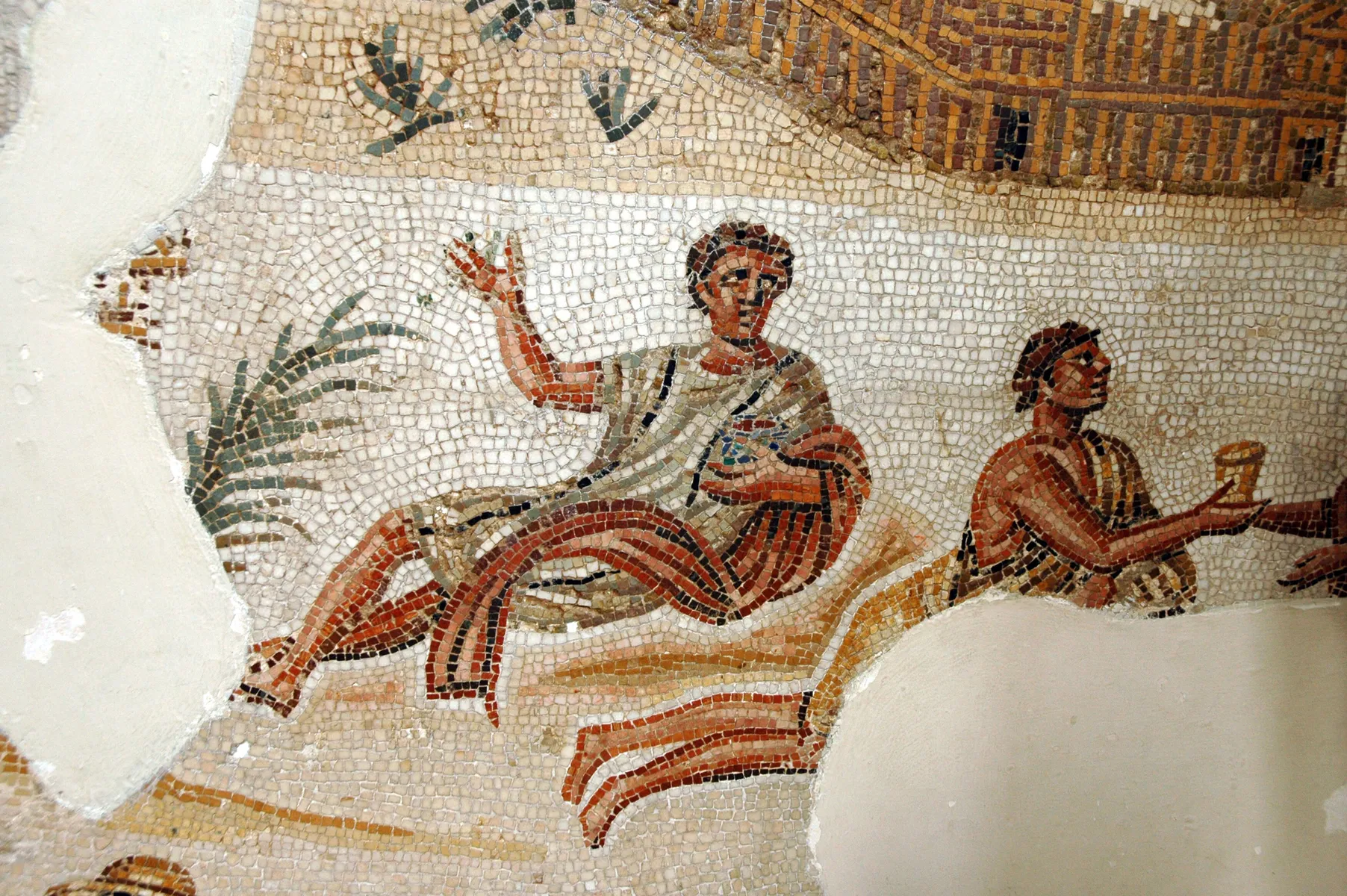
A Roman mosaic from Tunisia.
A rare vintage
Broken wine containers found in north London point to wine being made close to Brockley Hill in the 1st century CE.
Imported wine was drunk in Britain before this date, but it wasn’t until the Romans arrived that vineyards began to sprout.
Unlike today’s award-winning English sparkling wines, which now rival French Champagne, the winemakers in Brockley Hill couldn’t match the fine wines produced elsewhere in the Roman empire.
Their experiment failed after just a couple of decades. But the evidence they left behind shows how Roman culture shaped the area.
When did wine come to Britain?
On current evidence, there can be little doubt that it was the Romans who introduced winemaking to Britain.
Seeds of cultivated grapes have occasionally been found in prehistoric settings. And people of high status in the Iron Age would sometimes drink wine imported from Europe.
But there is nothing to suggest that grapes were grown and turned into wine in Britain before the Roman invasion of 43 CE.
British vineyards
A Roman vineyard discovered in Northamptonshire is now well known. Dating to the 2nd century CE, it is unlikely to have been unique. In the 3rd century CE, Emperor Probus said he wanted to encourage the “Brittanni” to keep vines and make wine.
Long before this, however, there had been attempts at commercial winemaking just a few miles north of Roman London, which they called Londinium.
The evidence comes from the discovery of broken pieces of wine jars, called amphorae – which are now in our London Museum stores.
The pieces date from the 1st century CE, perhaps as little as 20 or 30 years after the Roman conquest.
The secrets of the amphorae
The dump of broken amphorae was unearthed in 1975 in the grounds of the Royal National Orthopaedic Hospital on Brockley Hill, on the west side of the A5.
It’s possible the wine jars were broken in an accident on the nearby Roman highway.
The dump includes the remains of 25–30 vessels of a specific type – a variety of amphora called a Dressel 2-4. These containers were originally developed in Italy and the Aegean to transport wine. They stood about one metre tall, held 20–25 litres, and had a long neck, a pair of elongated handles and a pointed base.
Made near Londinium
Expert analysis of the clay fabric showed that these pieces were made locally. In fact, the entire district – which the Romans probably knew as Sulloniacae – was a major pottery centre in the 1st and 2nd centuries.
Another design of amphora, which originated in southern France, was also made at Brockley Hill. Our stores contain a couple of complete examples.
This type was also used to transport wine and was made of the same clay. But they’re a very different shape, with a flat base and short neck. The largest examples are half a metre tall, and could hold 30 litres at least.

Stone sculpture from France, probably part of a wine merchant’s tombstone, showing barrels on a river boat.
Could the amphorae have held imported wine?
Since we know these amphorae were made in Brockley Hill, we can be confident they were used to transport wine which was made nearby.
This is based on what we know about Roman wine estates in other countries. Large wine estates in the south of France made their own amphorae. Because of their weight and size, it made no sense to transport empty amphorae over long distances.
It’s true that amphorae were often reused to transfer liquid – for example, from a much larger barrel to a bottle. But there isn’t much evidence to suggest that amphorae like the ones found at Brockley Hill were made specifically to transfer or bottle wine imported from somewhere else.
“The pottery industry in Brockley Hill worked in a fully Roman style”
Brockley Hill pottery
The pottery industry in Brockley Hill worked in a fully Roman style. Stamped trademarks on the ceramics suggest that immigrant potters worked alongside local British craftspeople.
Their workshops and kilns were concentrated to the north of Edgware, with outliers in St Albans and on the northern outskirts of Londinium itself.
The ceramics served a growing immigrant population in the capital. They were also used by aspiring Britons, who merged Mediterranean and traditional British styles of cooking.
The two most distinctive products were jugs – used to serve wine – and mixing bowls, “mortaria”, used by cooks to prepare the sauces and marinades of Roman cuisine.
Regional wine-making
Techniques established in other parts of the Roman empire probably shaped Brockley Hill’s budding wine industry too.
The two types of amphorae made at Brockley Hill suggest that there may have been two wine-making traditions present in this area of north London.
Gauloise amphorae were mostly made along the Mediterranean coast of France and in the Rhône valley.
Dressel 2-4s are associated with Italy, but they also carried wines from southern and eastern Spain.
Was it good wine?
Brockley Hill’s steep southward-facing slope is ideal for growing wine grapes.
On the other hand, its soil isn’t great – but the effects of soil are difficult to measure. And, without knowing the vineyard’s exact location, it’s hard to know what effect the climate of Roman Britain had on the grapes.
Whatever the case, it’s unlikely that an expert from Italy or France would have been satisfied with any wine produced in Britain.
The greatest vintages of the ancient world were sweet white wines. Even today in Britain, despite global warming, we can’t achieve the ripeness you’d need to match them.
A commercial failure
With customers wanting an authentic taste of Roman culture, the wine grown in this region was doomed to fail. If it had been successful, we’d expect to find more of the Brockley Hill amphorae beyond the sites where they were produced – but that’s not the case.
The first British wine was an experiment that barely lasted a couple of decades.


